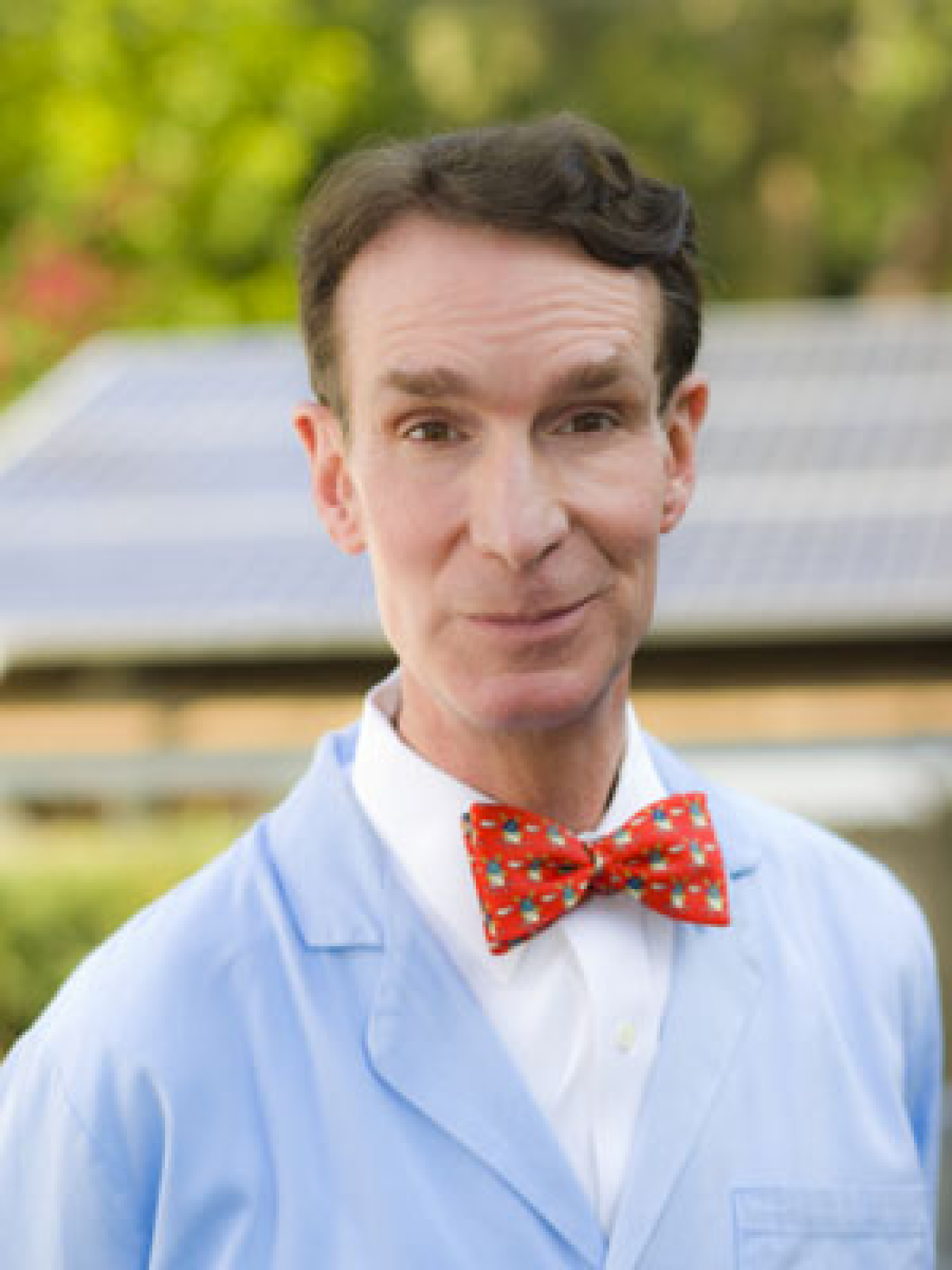
Bill Nye currently hosts three television shows about science. | Photo courtesy of Bill Nye
For years, Bill Nye entertained children on the educational television series “Bill Nye the Science Guy.” Using wacky demonstrations, funny music videos and easy to digest lessons, Nye encouraged children to enjoy and appreciate science. The quirky Nye—a scientist, engineer, comedian, author, and inventor—now works to spread the message of renewable energy, and regularly takes on projects to “green” his own Californian home.
Nye currently hosts three running television series: “The 100 Greatest Discoveries” on the Science Channel; “The Eyes of Nye” on PBS; and “Stuff Happens” on Planet Green.
Q: So you’ve been all across the board with science and engineering. What drew you to renewable energy?
A: I’ve been interested since the first Earth Day celebration— I grew up in Washington, D.C.—and I went to the first Earth Day on the National Mall. In those days, we were all concerned about pollution, and pollution is just a small part of it now. Now the concern is climate change, it’s just going to really affect your children and your grandkids.
Any scientist who is serious about science eventually becomes an environmentalist. You just become interested. You don’t have to think that hard about it to notice that we’re not doing enough, I mean the sunlight falls everywhere and we don’t take that much advantage of it. You just become interested in solving these problems.
Q: What types of clean energy projects do you have at your home?
A: The solar panels at my house kick butt. I have as many solar panels as I can manage. The problem is the neighbor’s house makes a big shadow, so I can’t fill the roof. At this time a year, I make 20 kilowatt-hours (kWh) a day and I use about 7 kWh. I come out way ahead. During the winter, I need about 10 kWh or 9 kWh and I’m only making about that. We break even for the most part during the winter. We’ve also got two tankless heaters to reduce standby water—that cooler water that’s sitting in the pipe when you turn on the hot faucet.
I have a low water- use front yard—native grasses that live in semi-arid areas that only use 20 percent of the water as other lawn plants. I love that!
Having all of this, it’s big fun. Every 60 days I get an energy bill for $7…it’s just cool.
Q: What are some things that the average family can do to make their homes more energy efficient?
A: The biggest thing you can do is insulate. Everybody says this...but it’s true. And if you’re a crazy person and you want to invest—get a small loan, add it to your mortgage and replace your windows. It’s half of what people pay for SUVs, and it stays in the house as long as you’re there. The windows can just make a huge difference in your energy bill.
Then there are the smaller things, like replacing the light bulbs with LED bulbs. You will immediately save a few dozen dollars a month. I hear people complaining that “These light bulbs are $15! That’s outrageous - blah, blah, blah.” You save that much a month, so it’s worth it in the end.
Q: Why do you believe is it important for Americans to invest in renewable energy?
A: We just can’t keep putting all this CO2 into the atmosphere, and we’re so dependent on fossil fuels. We have five times more renewable energy in wind in North Dakota than we use in the United States. North Dakota could be the Saudi Arabia of wind!
Plus, when a wind turbine collapses, it’s no big deal. It’s broken you have to repair it. Maybe the tower or something came loose or rusted, but…not only did nobody get hurt, it’s just really not that serious of a problem compared to this oil blow out or the kind of thing that could go wrong when we have a substantial number of nuclear power plants.
Q: You spent years making science fun for kids on Bill Nye the Science Guy. What do you think is the best way to teach today’s kids about energy efficiency and alternative energy?
A: We need science curriculum standards at the elementary level. Getting people involved and passionate about this stuff in high school is too late; you have to get them excited when they’re in 3rd and 4th grade.
We need to provide elementary school teachers the means to do get these kids excited, demand it and be able to fund it. These are not new sentiments; I’m hardly the first person to say this. It’s all easy to say and hard to do.
Q: What can kids today do to help save the planet in the future?
A: Well, we can cut energy usage just through conservation—and that’s good—but we need BIG ideas, we need scientists and engineers. We need young people to become these to solve BIG problems.
We need cars that get 100 miles a gallon. We need a smart electrical grid. We need to figure out how to dispose of nuclear waste. These are hugely gigantic things that are more than recycling cans. I’m a huge fan of small measures. Turn out the lights when you leave a room. Shut off the water when you’re brushing your teeth. Change to LED light bulbs. We’re not gonna get out of this energy mess with these small measures.
Traditional environmentalists want you to do less, drive less, etc.—that’s all great, but that’s not the key to the future. We have to learn to do MORE with LESS. Some people say “Well that’s just not possible!” Of course it is. You just have to decide to do it.

